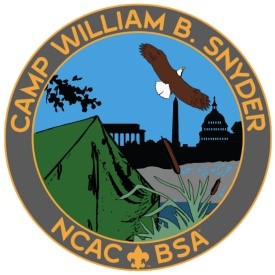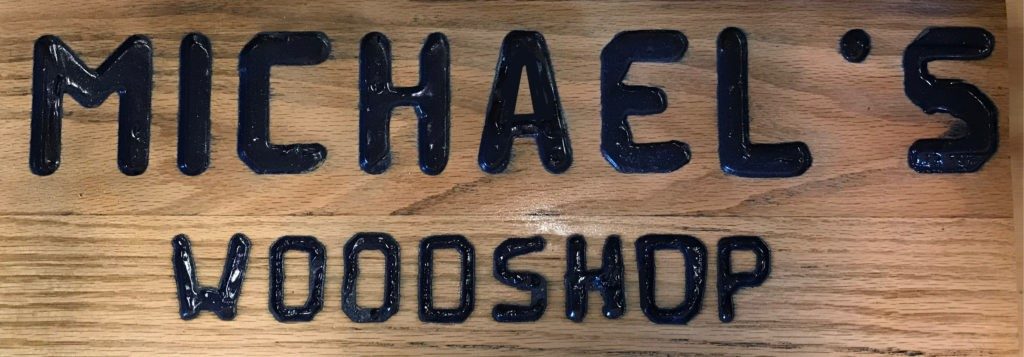INVASIVE SPECIES 101
Invasive species are animals or plants from another region of the world that don’t belong in their new environment. Invasive species can lead to the extinction of native plants and animals, destroy biodiversity, and permanently alter habitats.
———————————————————————————————————————————
EXAMPLES OF INVASIVE SPECIES: MY PERSONAL FAVORITE – WINEBERRY
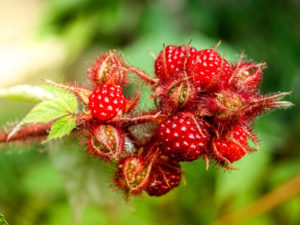 Wineberry is an Asian species of raspberry native to China, Japan, and Korea. The species was introduced to Europe and North America as an ornamental plant and for its potential in breeding hybrid raspberries. Now, it covers forest floors, stealing water and nutrients from native plants.
Wineberry is an Asian species of raspberry native to China, Japan, and Korea. The species was introduced to Europe and North America as an ornamental plant and for its potential in breeding hybrid raspberries. Now, it covers forest floors, stealing water and nutrients from native plants.
My Eagle project Boo Berry Yay Fern was called so for a reason! As a part of my Eagle and DCSA project, I enlisted volunteers and logged over 200 hours cleaning invasive Wineberry from Tattersall park in Oakton! Yay to Ferns, which are Virginia native plants, and Boo to Wineberry for hampering their growth.
———————————————————————————————————————————
JAPANESE STILTGRASS
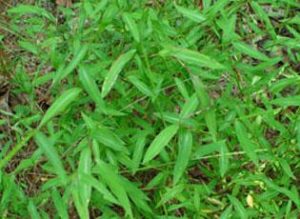 Japanese stiltgrass was originally brought to the US from Japan as packing material. The seeds were able to spread through this, and now it steals water and nutrients from native plants.
Japanese stiltgrass was originally brought to the US from Japan as packing material. The seeds were able to spread through this, and now it steals water and nutrients from native plants.
For those who don’t know its dangers, it looks pretty amazing. Walk through a woodland and you see all this lush green grass growing under the trees. The trouble is; that is all you will see. There is absolutely nothing else growing there but Japanese stiltgrass. It takes over everything and smothers out all the native plants that should be growing in the woodland. In fact, the unchecked growth of siltgrass has gotten too out-of-hand in some areas, forcing counties to declare this noxious weed as an “introduced” species, indicating that the problem is on too large of a scale to deal with.
———————————————————————————————————————————
EMERALD ASH BORER
Brought from China, most likely inside various forms of packing material. Burrow into Ash trees and eat away the inner bark, causing the tree to die when the bark is gone.
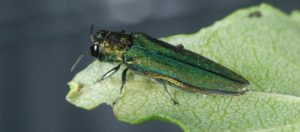 These pests have been causing mass die-offs of ash and other trees all across the US. These die-offs remove the forest leaf canopy, causing more sunlight to reach the forest floor. Due to this increased sunlight, invasive plants can spread much more easily. Nonetheless, Emerald ash borers form a lethal combo with any other invasive plant species.
These pests have been causing mass die-offs of ash and other trees all across the US. These die-offs remove the forest leaf canopy, causing more sunlight to reach the forest floor. Due to this increased sunlight, invasive plants can spread much more easily. Nonetheless, Emerald ash borers form a lethal combo with any other invasive plant species.
———————————————————————————————————————————
JAPANENSE HONEYSUCKLE
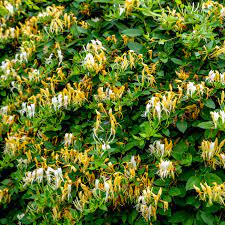
Also brought from Japan as an ornamental houseplant, and was released into the wild. However, it can grow to incredible sizes and choke out native wildlife.
Japanese honeysuckle directly benefits from the increased light on forest floors that is caused by the emerald ash borers. While it may look good as an ornamental plant, after a point, it will start growing at unparalleled speeds, at which a single plant is able to reach sizes of up to 30 feet long!
———————————————————————————————————————————
A COLD HARD FACT
4300: Number of unique invasive species in the USA, as estimated by the Department of Fish & Wildlife management.
———————————————————————————————————————————
INVASIVE SPECIES MANAGEMENT 101
DETECTION
Certain apps -like that provided by the Fairfax County IMA program- can use your phone’s camera to identify invasive species. If the plant is new to the area, report it to the respective agency.
PREVENTION
Most invasive species have their seeds spread by your clothes. Always wipe yourself and brush your shoes at the designated station before leaving a park.
CORRECTION
To help stop these damaging invasive species from spreading and destroying our native plants and animals, we must remove them. When these are removed, ensure that you are removing them from their roots (some may have deep roots), to have a lasting effect!
Sign up for cleanups and conservation efforts, and if you see invasive species, get rid of them. Every little bit will help in our fight against invasive species.
———————————————————————————————————————————
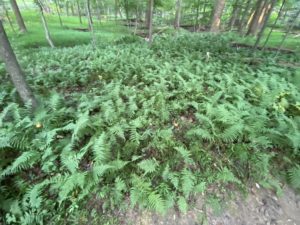 RESULT: YAY FERN!!!
RESULT: YAY FERN!!!
Putting a stop on invasive species will help the native environment to thrive, not just native plants, but native animals and the entire ecosystem! This is an example of a section in Tattersall Park, Oakton, which now shouts out “ YAY Fern!”
————————————————————————————–
AS A SCOUT
Join cleanups & projects that are removing invasive plants and planting new native species in their place.
Spread the word! Promote understanding of native plants by educational outreach. This can be just emails, blogs (such as this one), presentations, public fairs booths, farmers market booths etc. You can certainly get creative!
For more information, you can visit the IMA site at https://www.fairfaxcounty.gov/parks/invasive-management-area
———————————————————————————————————————————
CITATIONS
Fairfax County Invasive Management area: https://www.fairfaxcounty.gov/parks/invasive-management-area
US Fish and Wildlife Service: https://www.fws.gov/
Picture Credits: Google images (Licensed for usage)

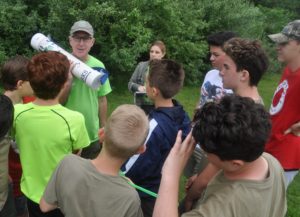
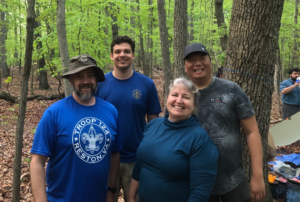
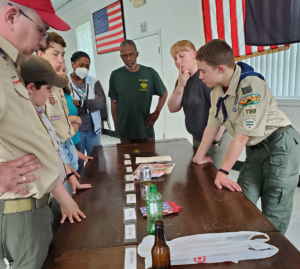
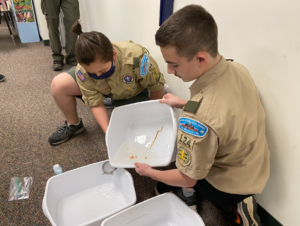
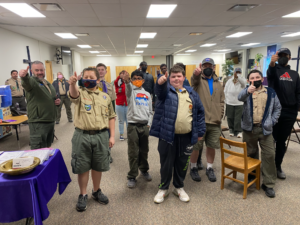
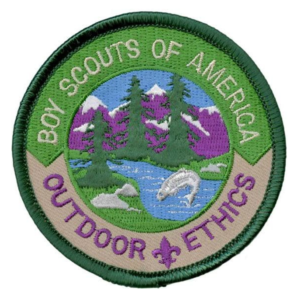
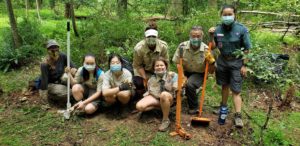
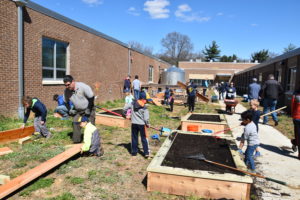

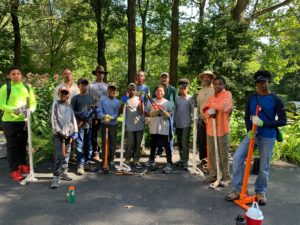
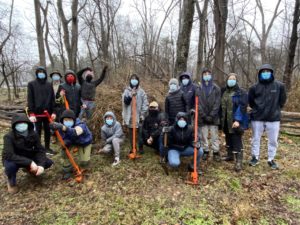
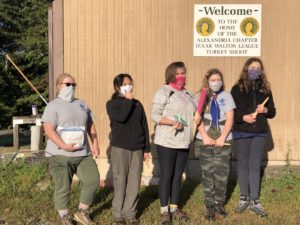 The Founder of Scouting, Lord Baden-Powell said: “God has given us a world to live in that is full of beauties and wonders… if only we have the sense to look at them in that light.” The Scouts BSA Outdoor Code tells Scouts “To be Conservation Minded.”
The Founder of Scouting, Lord Baden-Powell said: “God has given us a world to live in that is full of beauties and wonders… if only we have the sense to look at them in that light.” The Scouts BSA Outdoor Code tells Scouts “To be Conservation Minded.” This project was important because, although the Pawpaw and Persimmon are fruit trees native to Virginia, they cannot thrive on their own. Pawpaw trees require pollination from an unrelated tree to bear fruit. Persimmon trees generally need a male tree to pollinate a female tree to produce fruit. These factors, combined with the large seeds that are not eaten and spread by animals, hinder fruit bearing Pawpaw and Persimmon groves.
This project was important because, although the Pawpaw and Persimmon are fruit trees native to Virginia, they cannot thrive on their own. Pawpaw trees require pollination from an unrelated tree to bear fruit. Persimmon trees generally need a male tree to pollinate a female tree to produce fruit. These factors, combined with the large seeds that are not eaten and spread by animals, hinder fruit bearing Pawpaw and Persimmon groves.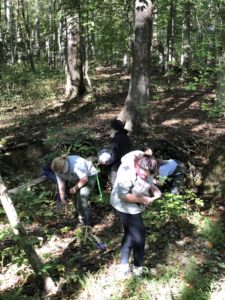 While this was Troop 840 Girls first Conservation Project, the Scouts have conducted several community focused Service Projects. These included projects for our Nation’s Veterans in conjunction with Vets on Track, which furnishes/decorates homes with essentials and comfort items for homeless Veterans “Making Houses into Homes” and Black Horse Forge which provides free metal forging classes and forging facilities for Veterans; Black Horse Forge is planning to expand into woodworking too and also has horses, donkeys and chickens for visiting Vets to caretake. Additionally, Troop 840G Scouts have participated in the National Night Out opening ceremony and Scouting for Food.
While this was Troop 840 Girls first Conservation Project, the Scouts have conducted several community focused Service Projects. These included projects for our Nation’s Veterans in conjunction with Vets on Track, which furnishes/decorates homes with essentials and comfort items for homeless Veterans “Making Houses into Homes” and Black Horse Forge which provides free metal forging classes and forging facilities for Veterans; Black Horse Forge is planning to expand into woodworking too and also has horses, donkeys and chickens for visiting Vets to caretake. Additionally, Troop 840G Scouts have participated in the National Night Out opening ceremony and Scouting for Food.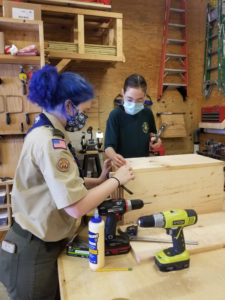
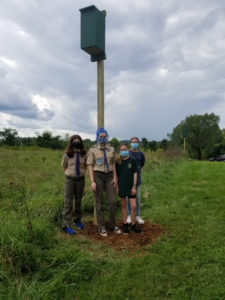
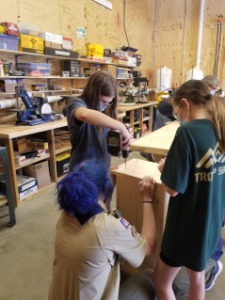 As a part of their work to earn the Mammal Study merit badge, Scouts from GT582 came out to Michael’s Woodshop at Camp William B. Snyder to build two Johnson Bat Houses. The Troop was very well prepared and arrived with all of the materials and supplies needed to construct, paint and install the bat houses. With guidance from a volunteer Shop Steward, the Scouts were able to learn and apply many useful woodworking skills; measuring & marking, drilling, gluing and clamping. They were focused, demonstrated great teamwork and were able to complete, paint and install a set of great looking bat houses in approximately 6 hours. Not only did they complete a requirement for their merit badge, they had a great time working in the shop and made a very impressive addition to Camp Snyder. It was a day very well spent!
As a part of their work to earn the Mammal Study merit badge, Scouts from GT582 came out to Michael’s Woodshop at Camp William B. Snyder to build two Johnson Bat Houses. The Troop was very well prepared and arrived with all of the materials and supplies needed to construct, paint and install the bat houses. With guidance from a volunteer Shop Steward, the Scouts were able to learn and apply many useful woodworking skills; measuring & marking, drilling, gluing and clamping. They were focused, demonstrated great teamwork and were able to complete, paint and install a set of great looking bat houses in approximately 6 hours. Not only did they complete a requirement for their merit badge, they had a great time working in the shop and made a very impressive addition to Camp Snyder. It was a day very well spent!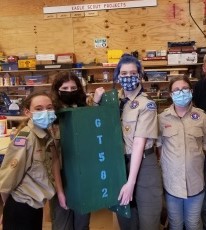
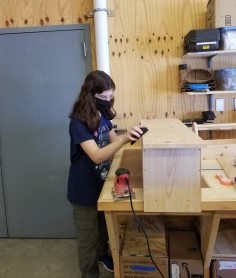 Camp Snyder is the perfect venue for conservation projects and other service projects. It is conveniently located and many conservation projects are readily available. Camp Snyder is resuming its monthly Volunteer Service Day schedule and other work dates can be arranged upon request. If you would like to learn more about available conservation and other service projects at Camp Snyder, upcoming Volunteer Service Days or to arrange for your own group project, please email us at
Camp Snyder is the perfect venue for conservation projects and other service projects. It is conveniently located and many conservation projects are readily available. Camp Snyder is resuming its monthly Volunteer Service Day schedule and other work dates can be arranged upon request. If you would like to learn more about available conservation and other service projects at Camp Snyder, upcoming Volunteer Service Days or to arrange for your own group project, please email us at 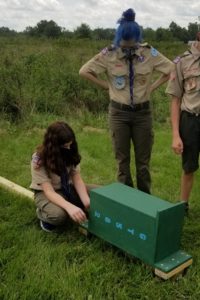

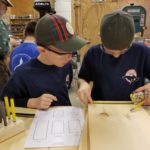
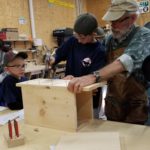
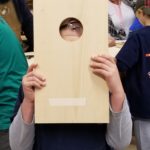
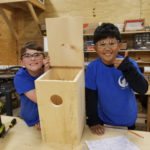 As the boxes began to take shape, so did their smiles. At the end of the session, the Webelos had created six awesome owl boxes. After watching this “normally active bunch” stay focused and engaged for over 2 hours, their Den Leader described it as “a truly awesome experience”.
As the boxes began to take shape, so did their smiles. At the end of the session, the Webelos had created six awesome owl boxes. After watching this “normally active bunch” stay focused and engaged for over 2 hours, their Den Leader described it as “a truly awesome experience”.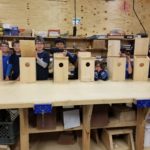 Scouts and other volunteers will continue this conservation project on future Camp Snyder Service Days by installing these owl boxes throughout the camp and maintaining them in the coming years. Many similar conservation projects are available – Scouts recently installed four bluebird boxes at camp with several more to go. If you would like to learn more about conservation and other service projects at Camp Snyder, upcoming Service Days or to arrange for group projects, please email us at
Scouts and other volunteers will continue this conservation project on future Camp Snyder Service Days by installing these owl boxes throughout the camp and maintaining them in the coming years. Many similar conservation projects are available – Scouts recently installed four bluebird boxes at camp with several more to go. If you would like to learn more about conservation and other service projects at Camp Snyder, upcoming Service Days or to arrange for group projects, please email us at 